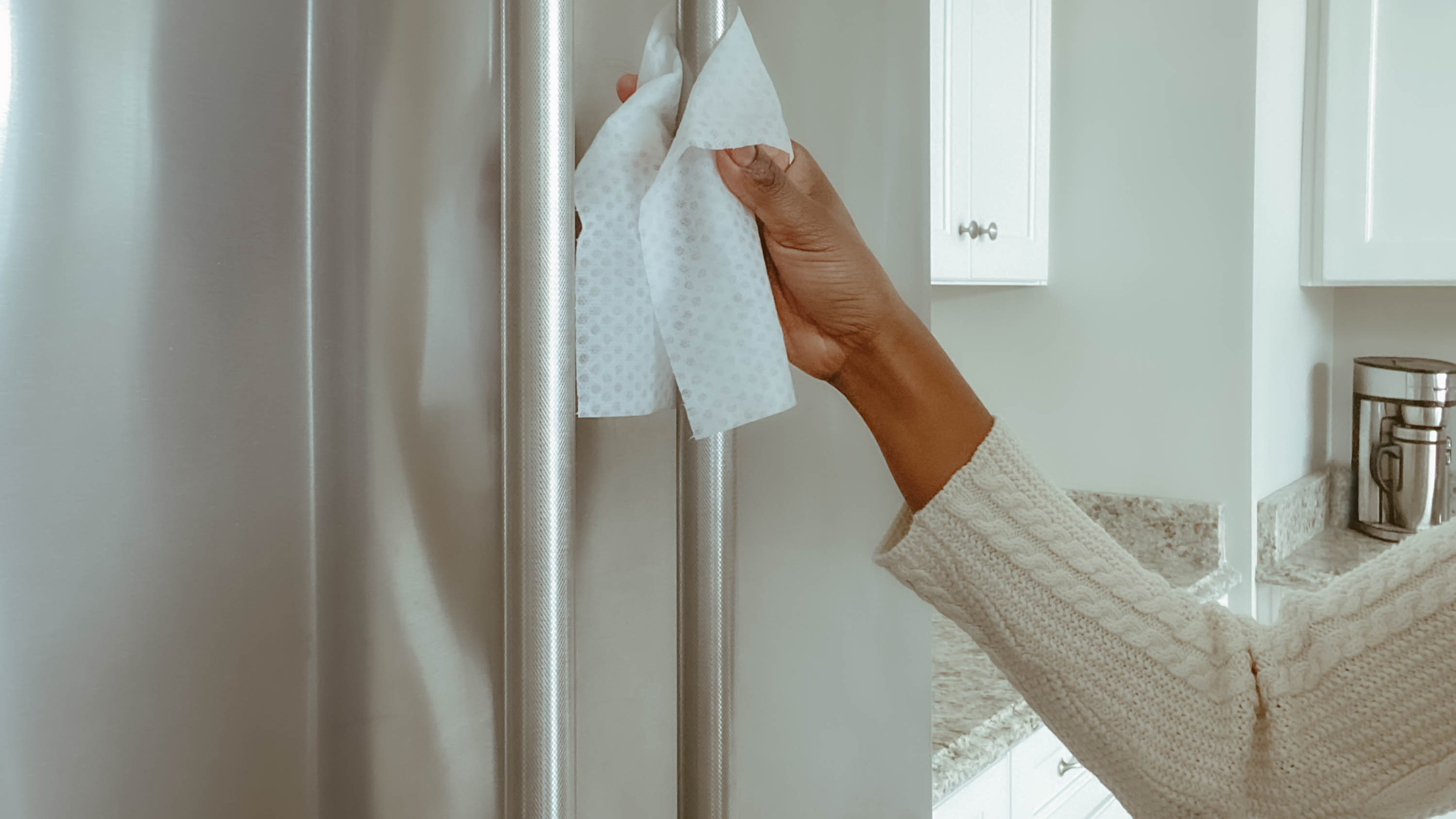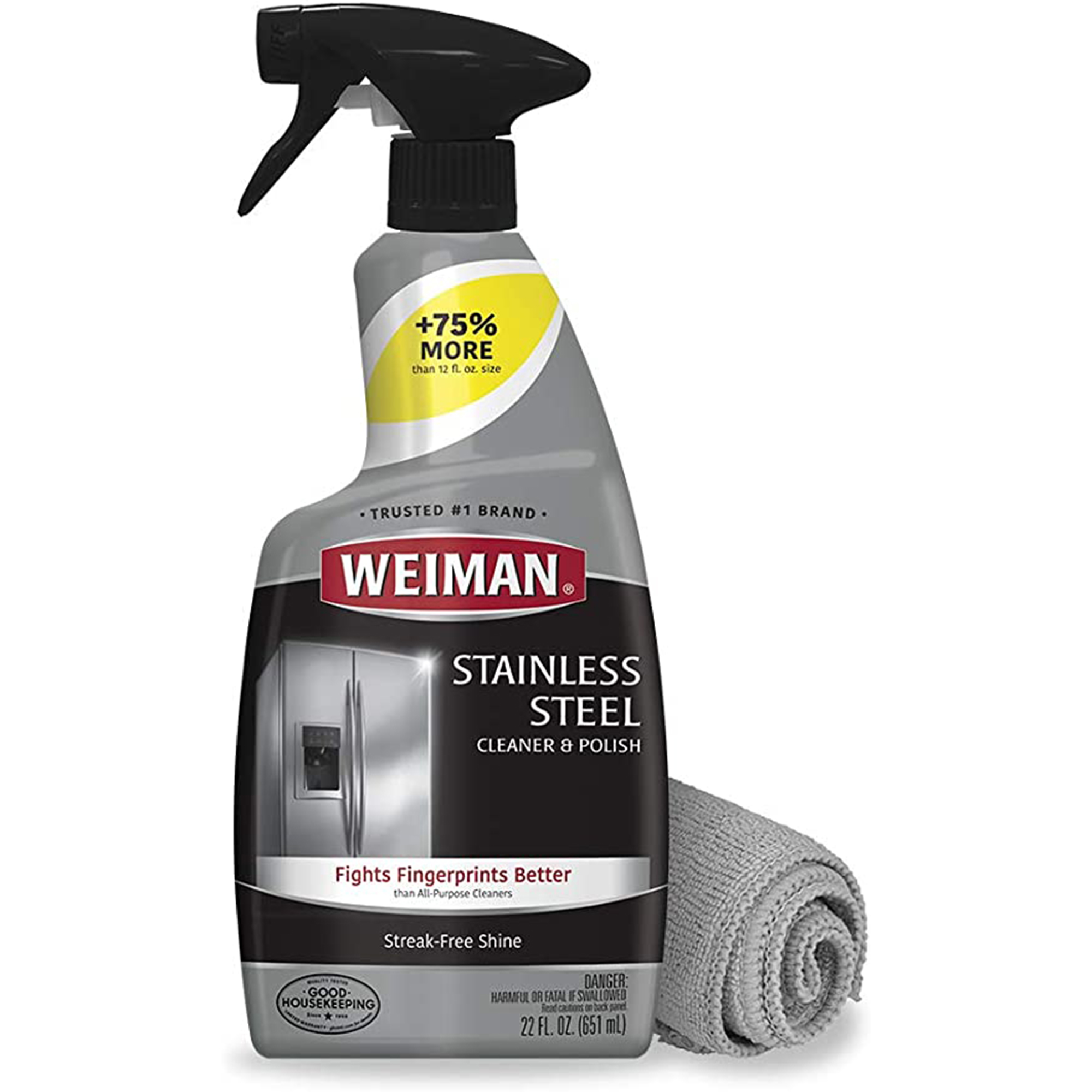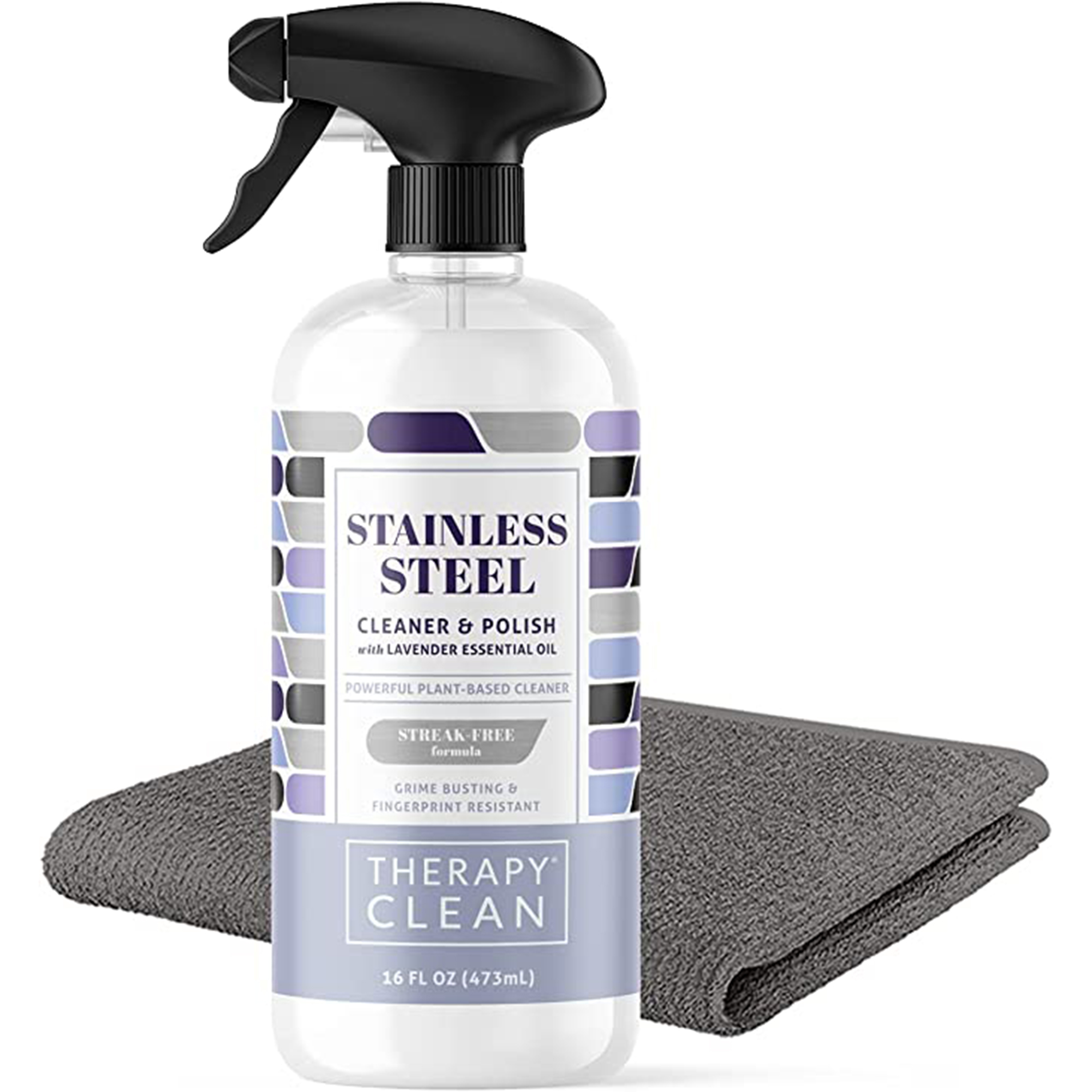How to clean stainless steel naturally — your chemical-free cleaning guide
No need to fork out on new appliances

Jessica Brown

When you know how to clean stainless steel appliances, pans, cutlery, and more, it'll make all the difference in maintaining your metal cookware. After all, no one likes the look of dull and dirty... anything (especially if you're hosting and want to impress your BFFs). So if your refrigerator door, knife set, or sink has dirty fingerprints and cooking splashes all over them — it's time to get clued up.
The best part of cleaning a kitchen is that restoring shine is easily done naturally and affordably with eco-friendly cleaning supplies such as vinegar, and baking soda — plus, the right non-abrasive tools. So if you want squeaky clean kitchen surfaces and small kitchen appliances, get to grips with cleaning stainless steel properly to make your cooking space a spotless, shiny, and welcoming space where you want to prepare food and entertain.
Though most refrigerators now have antibacterial coatings on the inside, there's no harm in upping the hygiene factor of handles, fascias, and door panels (the same goes for that sticky-fingered microwave). The outside of your oven is also a cozy spot for nasty germs and viruses to harbor... gross!
When you've done the job of polishing your stainless steel surfaces, you should be able to see your reflection on them. Even better for showing off that smug smile once you've done a sparkling job on them all!
Here's what you'll need
- Access to warm water
- Baking soda — we like Arm & Hammer (so do Amazon customers)
- A soft microfiber cleaning cloth — I'm obsessed with this Amazon Basics option
- White vinegar — this Heinz cleaning detergent from Amazon is my go-to
- Coconut oil, olive oil, or baby oil — the cheap stuff is fine for this, you can buy these at Amazon
- Sparkling water — a can of unflavored seltzer or soda will do
1. Use carbonated water to clean stainless steel sinks
If you want to know how to clean a stainless steel sink take note that sparkling water can be used to renew the shine. Simply pour sparkling water into the basin and rub it around with a clean cloth. It's as easy as that!
2. Clean a stainless steel pan with baking soda and vinegar
Boiling a pot or pan of water with approx. 7oz of white vinegar might be all you need to do to clean your best non-toxic cookware. For advanced stain removal, cleaning with baking soda will get rid of any grossness that's seriously stuck on.
3. How to clean stainless steel refrigerator with cooking or baby oil
Got finger or paw prints on your chiller? If you've (literally) got into a sticky sitch in the kitchen, it might show up on your refrigerator panel or handle. Seeing as this is the place you store food, you'll want to ensure all touchpoints are as clean as possible.
Get small space home decor ideas, celeb inspiration, DIY tips and more, straight to your inbox!
If the front of your fridge looks like the fingerprint dept in a forensics unit, get rid of the evidence with cooking or baby oil. No need to use your best extra virgin olive oil you got on vacation — a tiny dab of the cheap stuff is sufficient. Work it in with a clean cloth or paper towel (I like the thickness of Bounty which you can get from Amazon), polishing in the direction of the grain.
Of course, if you really want to, you can go in with a Lysol disinfectant wipe (available at Amazon) or antibacterial cleaner, but vinegar can kill most nasty bugs.
What is the best thing to clean stainless steel with?
Though we've listed some highly-rated stainless steel cleaners from Amazon above — natural products contain powerful active ingredients that can compete with the stuff in the cleaning aisle. Vinegar for example contains acetic acid and sodium bicarbonate (aka baking soda) is naturally abrasive. The gritty texture is perfect for dislodging dirt and food debris.
How do you make stainless steel shiny?
Cleaning with shaving foam might seem like an odd idea, but this hair removal product can bring dull stainless steel items back to life.
"Shaving foam is an incredibly popular cleaning hack," says TikToker, Laura Williams, aka @cleaning_at83 demonstrating how to clean stainless steel radiators.
"The mix of acid, emulsifier, and surfactant seems to work well on metal and glass. While it’s no problem to use it on stainless steel, it may cause long-term issues on metal coatings or plating such as chrome."
Highly-rated products to clean stainless steel
(Priced low-high)

A Real Homes favorite, this powdered formula is perfect for cutting through baked-on food, rust, and mineral deposits. If you're not a fan of the talc-like texture or want more control when cleaning, there are also liquid and spray versions available on Amazon.

This Amazon Choice product (meaning it's highly rated, well-priced, and available to ship immediately) has almost 6,000 highly-rated reviews. It's the #1 selling stainless steel brand with a PH-neutral formula that won't damage your goods. And, it comes with a microfiber cloth — winning!

Gotta give it up for this Therapy stainless steel cleaner kit. It's plant-based, solvent-free, and made with natural essential oils. Yet it surprisingly still manages to get rid of fingerprints, grease, and stickiness.

Hi, I'm the former acting head ecommerce editor at Real Homes. Prior to working for the Future plc family, I've worked on a number of consumer events including the Ideal Home Show, Grand Designs Live, and Good Homes Magazine. With a first class degree from Keele University, and a plethora of experience in digital marketing, editorial, and social media, I have an eye for what should be in your shopping basket and have gone through the internal customer advisor accreditation process.